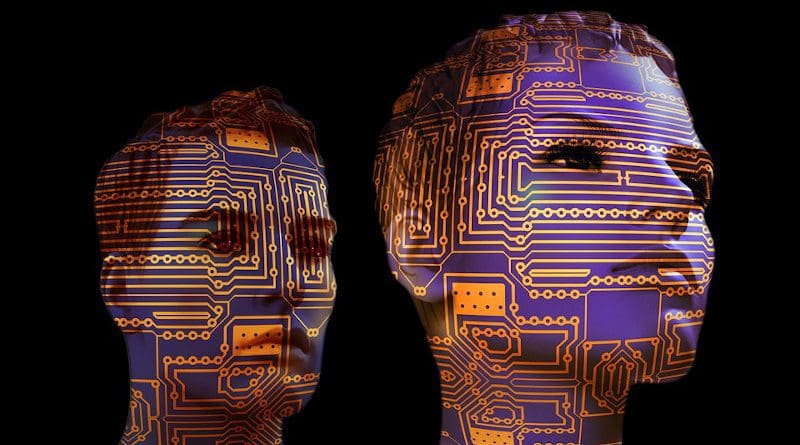Ukraine: Artificial Intelligence And War Crimes Investigations – OpEd
By IWPR
By Olga Golovina
Ukrainian law enforcement officials are beginning to use Artificial Intelligence (AI) tools in documenting and investigating potential war crimes committed by Russian troops.
Although only in its early stages, investigators say that such processes could be of huge benefit in saving human resources given the unprecedented amount of data documenting alleged violations that they are being presented with.
More than 107,000 proceedings have been launched since the full-scale invasion, involving millions of documents and pieces of potential evidence.
The Ukrainian prosecutor general’s office already has a database to collect all relevant information, with websites and chatbots to help Ukrainians categorise and submit digital evidence.
“The first thing we started was to digitise evidentiary information, to try to create a single repository of this data,” said Yuriy Belousov, head of the war crimes department of the office of the prosecutor general. “Then we started looking for tools that allow us to work with a large amount of data, to look for certain trends. If we talk about the propaganda used by the enemy, with the help of Microsoft tools, investigators can search by certain parameters and process huge amounts of information within a few hours.”
The department engaged the services of Palantir, a company that helps law enforcement agencies around the world analyse large volumes of data, map command structures and identify satellite images as well as search for individuals.
“This allowed us to identify more than 400 suspects during the war and to have about 50 convictions during that time,” Belousov continued, adding that other programming was supporting more efficient communication.
“In conditions of excessive workload, we spend most time on studying the case, searching for information, coordinating positions, communicating with the investigator, prosecutor and judge. These communication channels are not modern,” he said. “Therefore, with the help of our partners from the EU, we have now developed a technical task for electronic criminal proceedings, which provides for an electronic office of the investigator, prosecutor, communication using chats, and a task manager. The EU is now looking for a contractor to start implementing it. In the meantime, we have started to digitise criminal proceedings and systematise this data with the provision of access to our partners.”
The lack of access to occupied territories to investigate war crimes was another challenge for the system. Investigators have thus begun using 3D modeling of destroyed buildings, using software to record the destruction.
Belousov acknowledged that this was still a relatively new concept which would need further work to meet evidentiary standards and integrate into legal proceedings.
“But this is what will happen in the near future,” he said. “Therefore, it is necessary to teach judges now that evidence collection methods are changing. Of course, questions may arise – what software did you use, was it certified according to the relevant standards. It will take time to agree on these issues.”
Roman Avramenko, co-founder and executive director of Truth Hounds, also highlighted the challenge of legalising information obtained with the help of AI and turning it into evidence. Nonetheless, Truth Hounds was currently experimenting with AI tools including ChatGPT and Claude to support its data gathering efforts.
“We are in the testing phase of some tools, although they are few,” Avramenko explained, adding, “At the stage of documentation, it is important to establish the sequence of events, and it is often quite difficult; people testify differently, confuse dates. To bring everything into one – several testimonies recorded by different documenters in different places – we apply AI technology.
“Previously, one analyst could spent a whole day on the analysis of a single testimony. Now, a new technology does this; it identifies all the incidents that have occurred over a certain period of time. AI builds a chronology, identifies places and establishes connections.”
Collecting evidence from over six million Ukrainian refugees abroad and millions of internally displaced persons has also been a significant challenge, especially coordinating legal interactions across different jurisdictions.
An AI element will be integrated into the Core International Crimes Evidence Database (CICED) a highly secure platform facilitating joint investigations, allowing thousands of Ukrainians in different countries to report incidents, significantly aided by investment from the European Union Agency for Criminal Justice Cooperation. This database will be fully operational by November, streamlining information storage and sharing.
Ukrainian investigators have also used innovative technology to identify suspects from diverse data sources.
For example, civilians attacked by Russian forces in September 2022 in the Kharkhiv region during evacuation provided crucial information to investigators, including pinpointing specific locations. After the relevant areas were liberated, investigators used documents abandoned by the Russian units which contained personal details to identify potential perpetrators.
Using both AI and OSINT tools and in collaboration with over 45 NGOs, the prosecutor general’s office believe they have identified around 50 potential perpetrators. Some of these cases are included in specific ICC investigations currently underway.
This article was published by IWPR

